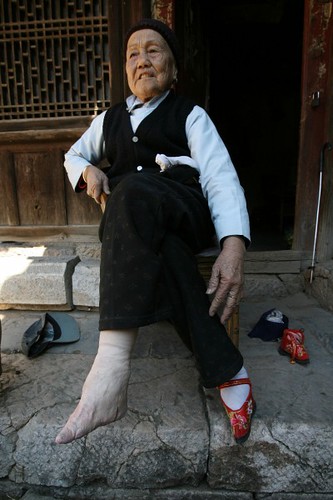
Zhou Guizhen, who is 86-years-old, shows one of her bound feet where the bones in the four small toes were broken and forced underneath the foot over a period of time, at her home in Liuyi village in China’s southern Yunnan Province, February 2007. Villages in China where women with bound feet survive are increasingly rare but the millennium-old practice nevertheless took almost four decades to eradicate after it was initially banned in 1911. Full story at Wired.
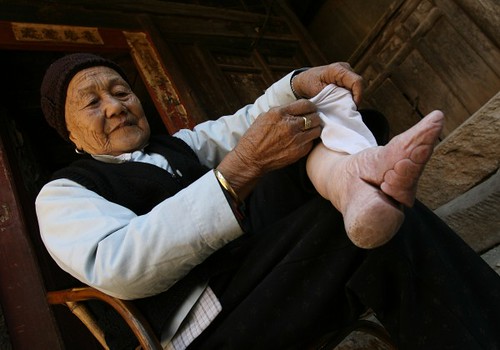
To bind feet, feet were first soaked in a warm bowl of herbs and animal blood, which caused the dead flesh to fall off. Toe nails were cut back as far as possible to prevent ingrown toenails and infection. Silk and cotton bandages were dipped in the solution and were wrapped tightly around the feet after the toes were broken. Four toes on each foot were broken and folded under. The big toe was left intact. Feet were often bound so tightly that even short distances were unable to be walked.
The bandages became tighter after drying. While drying, the toes were forced down and inward. Sometimes cuts were made in the sole of the feet to make the binding process easier. Most footbinding was done during the winter months, when it was thought the cold would numb the pain. The wrapping process was repeated every couple of days with fresh bandages. Each time, the bandages were pulled even tighter, causing excrutiating and long lasting pain.
In 1912, the Chinese government ordered the cessation of footbinding. Women were ordered to unwrap their feet. Failure to do so resulted in heavy fines and in some cases, death. When the Communists came into power in 1949, they too ordered a nation wide ban on footbinding. This was especially devastating to women with bound feet because most of them were forced to perform hard physical labor in the 1950′s.
According to the American author William Rossi, who wrote The Sex Life of the Foot and Shoe, 40 percent to 50 percent of Chinese women had bound feet in the 19th century. For the upper classes, the figure was almost 100 percent.
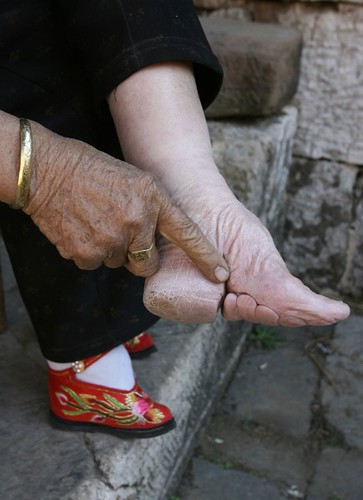
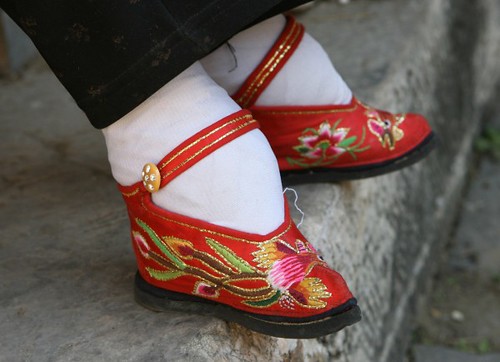
The ideal foot was three inches in length. Three inch feet were called golden lotuses. Feet that were between three and four inches in length were called silver lotuses.
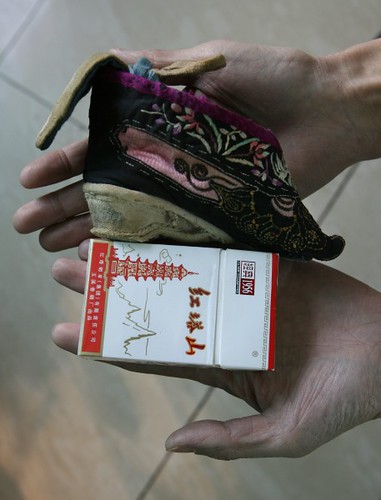

0 comments:
Post a Comment